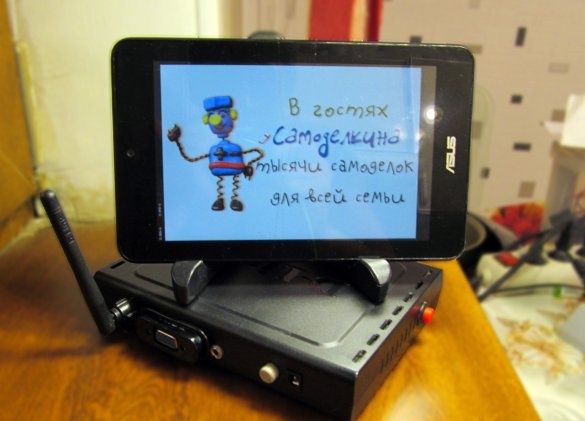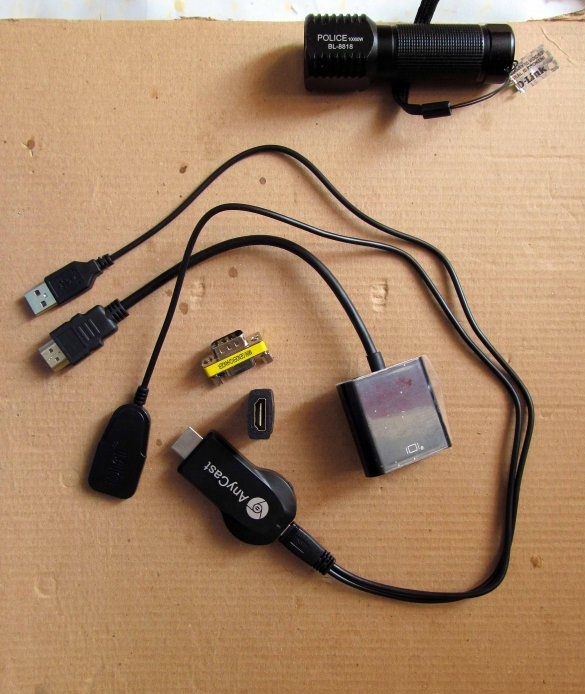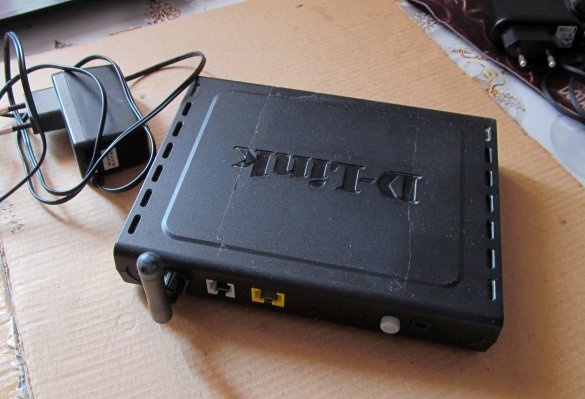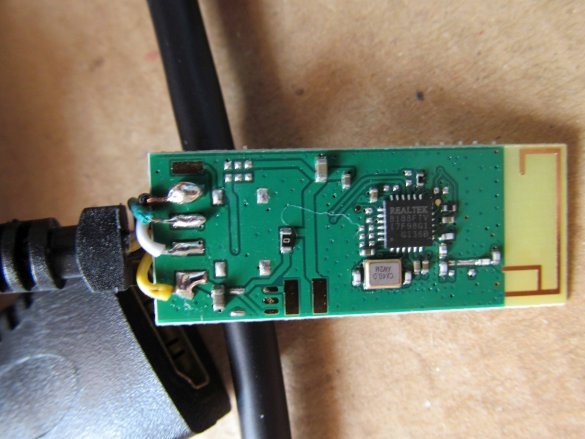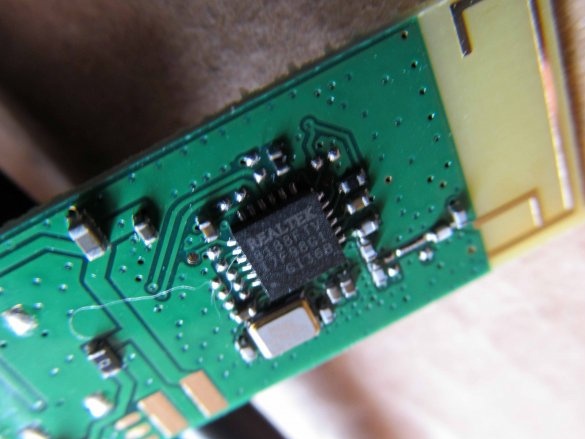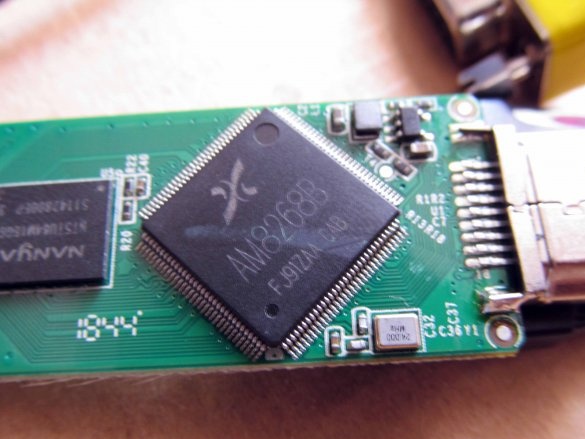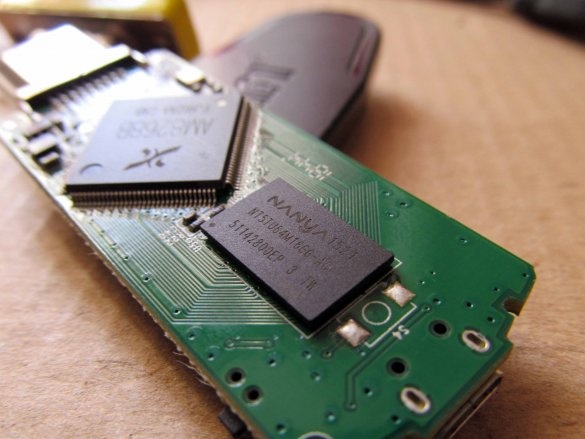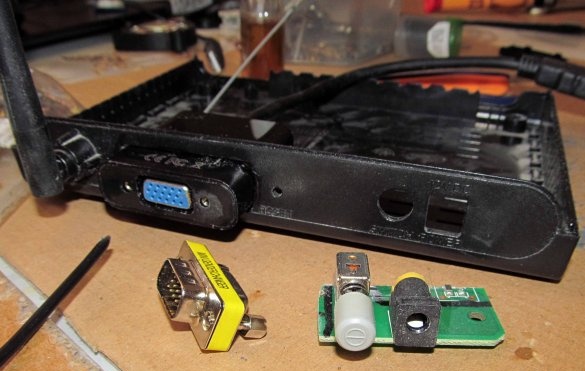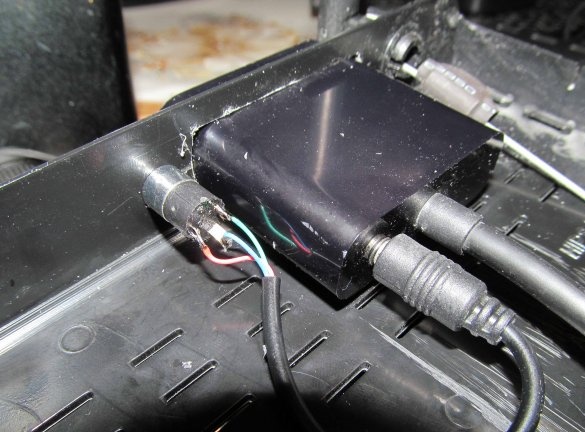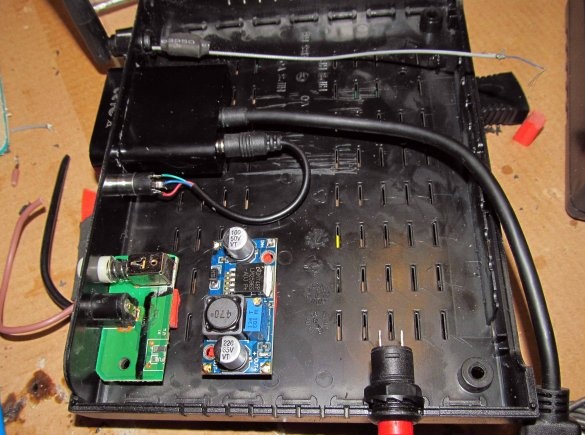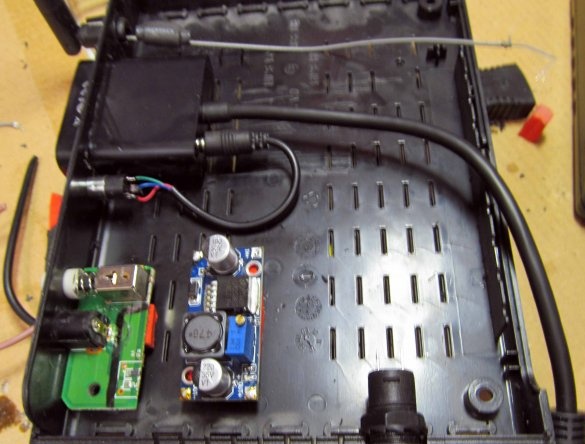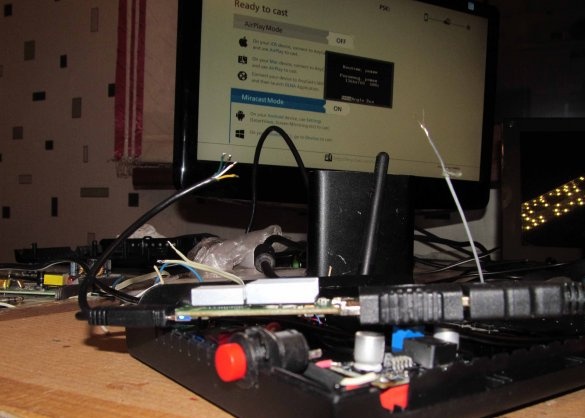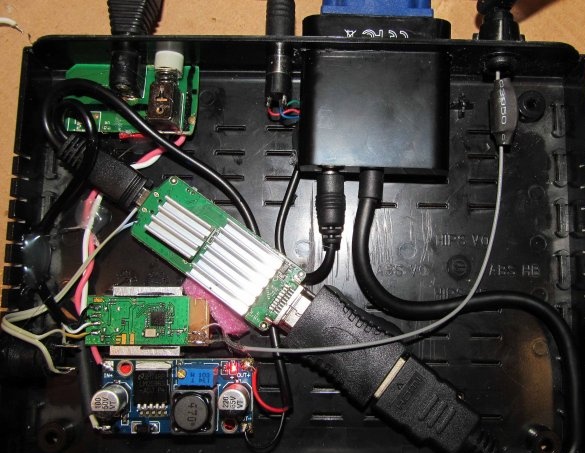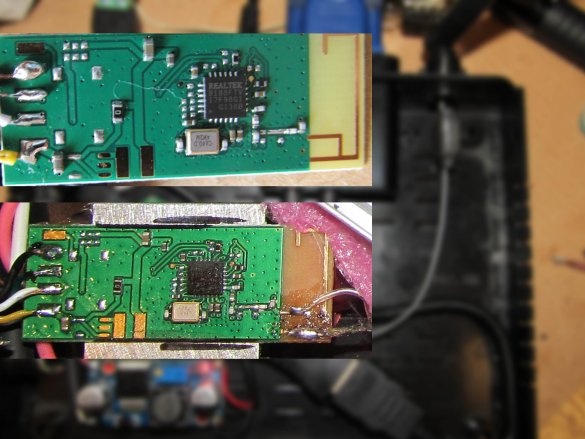As I wrote last time, they don’t want to use my home-made TV box. In general, I’m not offended - until this disastrous moment, tablet guts lay just like that for a couple of years. What if these guts lie now as another device?
Having watched a little how quietly all this is silent, I noticed that the television life has moved to tablets. By the way, YouTube has finally revised its copyright policy, and now on the resource there are a lot of legal (films for example) content that previously had to be illegally obtained anywhere. So, it's MiraScreen's turn.
In the photo, the AnyCast dongle itself, along with the WiFi dongle that comes with the kit. In general, the intestines are not bad - if I hadn’t decided to hide them in a simple and clear case, they would remain that way. But below I will tell you that this dream is unattainable.
And therefore, I suggest you see how this could be done.
If your TV or monitor has a full-sized HDMI input, then, of course, both the HDMI mom adapter and the HDMI to VGA converter will be superfluous. Also, I took the VGA male-female adapter - based on previous experience, I decided that it would not be superfluous.
The corresponding w3bsit3-dns.com branches emphasize that a + 5V power supply requires at least one honest ampere, and I also read about the short range of a complete WiFi dongle and overheating of both the wireless process and the main body. For two months, during which it was all going and going by mail, I had a clear plan in my head - an increase in the radius of action and a mandatory, additional cooling.
In addition, I strongly decided this time not to bother with flashing, but to deal with them only if the operational (a hundred times click here, go left-right, etc.) qualities will lose to the amenities obtained by simply fingering the tablet - otherwise, nobody will use it.
So, in addition to that, on Sunday a new camera was purchased and an article about the monitor was completed, on the same day, I managed to purchase a defective, wireless ADSL modem for a half bucks.
As you can see, I was lucky with the rear panel of the modem, there are only two sockets located next to it: telephone and LAN, and most likely, the VGA male-female adapter will not be useful to me.
But before flying into the kibitka and smashing it out, I drove the video file for about seven minutes (bitrate 1000 kb / s, 595x448) transferring it from the tablet.At a distance of more than one and a half - two meters from the WIFI dongle, the video began to slow down, pour in small squares and freeze. The body itself, warmed up significantly, but even hotter, the wireless module itself seemed, which means I will start the twin investigate with it.
The body is not glued and opens with a scalpel.
Wireless chip REALTEK 8188FTV
In the same forums w3bsit3-dns.com, I read that for some users that they also got to the bottom of this chip, it turned out that + 5V came to the chip, while the chip has a nominal power limit of + 3.3V.
I found both a datasheet and a description of this chip. In the datasheet in the related REALTEK 8188 –e - TV the + 3.3V is actually indicated, and in the datasheet for my 8188-F-TV it is written that there are two versions, according to the engraving on the case, and + 3.3V and + 5V.
But I could not find and read such an engraving on my case. Therefore, he simply measured the voltage supplied to the wireless module, - + 3.1V. Well, that means you should not wait for an ambush here.
Body processor: AM8268B.
Memory chip, next to it: Nanya nt5tu64m16GG, as I understand it, 1GB
Revision of the body motherboard. Pay attention to the self-resetting contactor SW1. After loading the operating system (6 seconds), a screen with two points will be shown — the type of device to be connected: iOS by default, and an alternative to Android — and this, with the only button, should select one of these points.
I have already removed the guts from the modem case, I cut off a piece of the PCB with the power plug and switch mounted on it from the main modem board, and connected the windows from two sockets into one. Now you can place the housing of the HDMI to VGA converter directly in it.
In the hole in the housing of the RESET modem, I decided to place an audio jack.
Preliminary fitting. I have a twelve-volt power supply, but there is no five-volt, so the LM2596S step-down module will be used.
Button for selecting an item of the on-off menu of the device type, which will be soldered to SW1.
I decided to shorten the cable on which the WIFI appendage hangs, there are only four veins and solder them to the place of work will not be.
A quick switch on showed that I hadn’t screwed up anything yet. Pay attention to the display in the background, it clearly shows the only two menu items for selecting the type of connected source.
And to the right, in the black screen of the laptop, you can see the LED strip of the previously converted desk lamp, and it is clear that some crystals are out of order. That's right, I managed to turn on a nearby (about thirty centimeters from the working lamp) air ionizer more powerful, and then, I heard the sound of seeds bursting in a pan. This, they were, and I noticed this fact somewhat later. But nothing, the tape is still there, I’ll replace it later.
And now in more detail.
On the AnyCast dongle microprocessor, I pasted the radiator with the usual “super monolith”. I have glue for attaching the radiators to the chips, but then to peel off the radiator - it is almost impossible - checked.
The fact is that, at w3bsit3-dns.com, people reflash such things, and sometimes, in cases of unsuccessful actions, access to the legs of the microprocessor is required to lock (scrape) them with a needle - I did not want to lose this opportunity. With the same glue, the memory chip was also covered. In the process of gluing and after, I withstood the AnyCast dongle on a hot heating battery, and the glue seized quite firmly, without flicking the radiator.
On the reverse side of the WIFI dongle, I glued the same heat sink with the same glue that I used to cool the microprocessor. And after drying and warming up, the module itself was glued to a permanent place through polyurethane foam sticks which are glued to the WIFI dongle on the other side of the heatsink on the long sides of it.
The lowering module is also glued through a polyurethane foam block. A scarf with a socket and a power switch was glued to the same block. The HDMI to VGA adapter was glued thinner through the gasket, and the AnyCast dongle mode select button was soldered.
Pay attention to how I soldered the braid and the central core of the high-frequency cable.
Turning everything on quickly, I saw that the distance at which the video file was played without fading became significantly smaller! Something I did wrong. Cursing, I retired to the environment on business.
After a refreshing hour, I spread my brains, and return to the photo in front of the last one, the upper right corner ... I uncoiled this shrink-wrapped plaque, and it hid inside itself a ferrite tube, around and inside of which, a high-frequency cable made a revolution.
I wonder why the developers installed this high-pass filter?
In general, after the removal of this disgrace, everything fell into place, and the radius of reliable reception increased to bold three and a half meters, against one and a half that were originally.
The radiator was also glued onto the wireless chip, on the same glue, but, on the back of the radiator, I pasted a mask (with a clean square square left) from a transparent adhesive tape so that, in the case of "you never know," the radiator would not shorten the surrounding smd elements .
Well, actually the result. Streaming HD video, no overheating and freezing consoles due to this. Without radiators at all, the prefix caught the frieze right up to the distortion of the power - I checked this from the very beginning.
References
.- profile;
- 8188FTV PDF;
- REALTEK chip;
- Nanya nt5tu64m16GG;
- anyCast;
- HDMI to VGA;
- HDMI adapter;
- VGA to VGA;
- lowering module.


